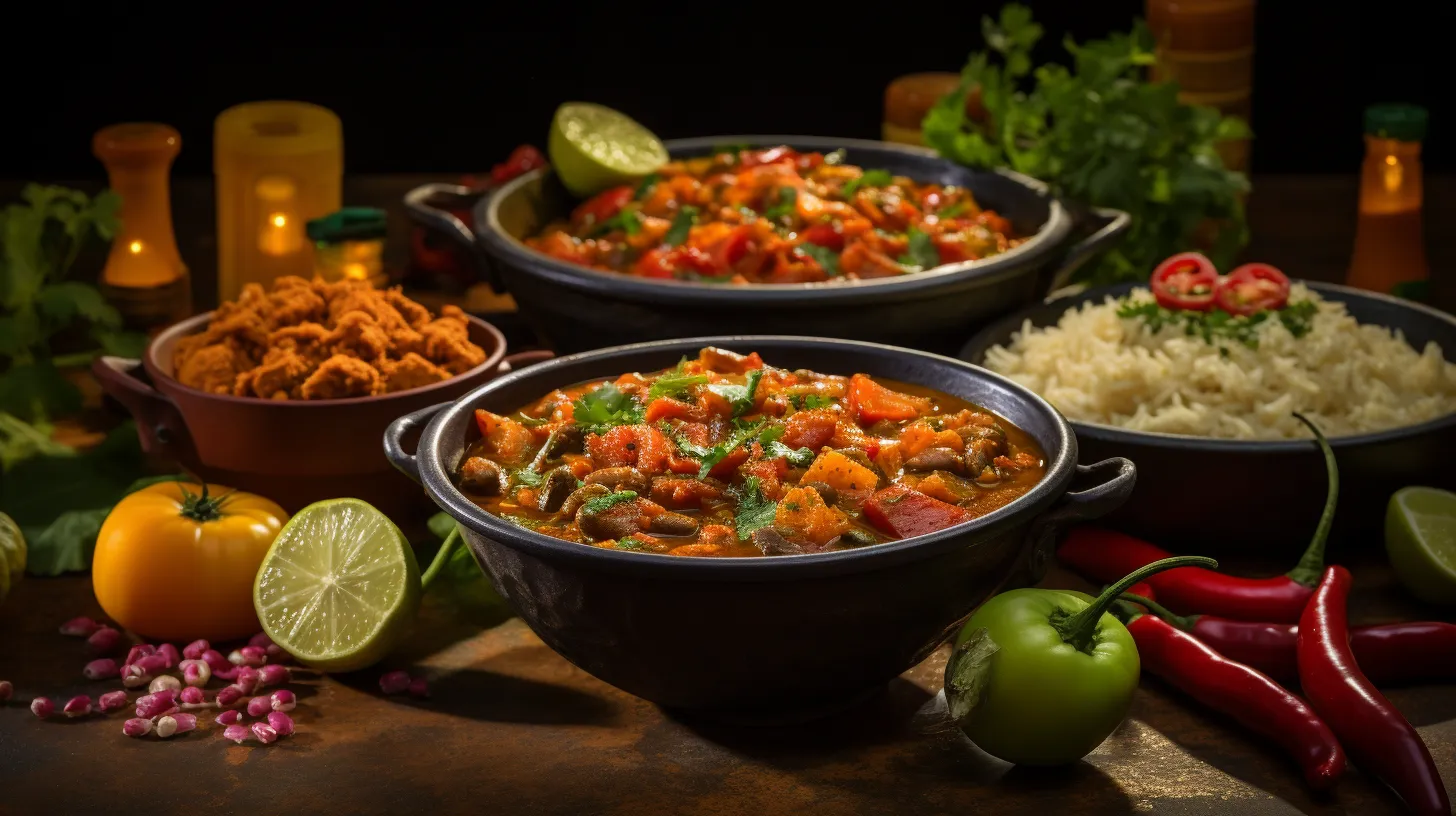Haitians have a strong affinity for spicy food. Chili peppers play a vital role in Haitian culinary traditions, adding bold and vibrant flavors to various dishes. The love for spicy food is deeply rooted in Haitian culture, reflecting its rich and diverse culinary heritage.
This article will explore the reasons behind Haitians’ love for spicy flavors and the regional differences in spice tolerance across the country. Additionally, we’ll delve into the popular spicy ingredients and their significance in Haitian cuisine, providing insight into the enduring appeal of spicy food in Haiti.
Haitian Relationship With Spicy Food

Haitians frequently embrace spicy food in their culinary traditions, incorporating chili peppers into many of their beloved dishes. This love for spice is deeply rooted in Haiti’s history and Caribbean influences, leading to the use of ingredients like the fiery scotch bonnet pepper in traditional Haitian cuisine.
Spicy stews, often featuring a variety of meats and vegetables, are a hallmark of Haitian cooking, showcasing the bold flavors and heat that are central to the cuisine. In creole cooking, the balance of heat and flavor is skillfully achieved, catering to the dietary requirements and preferences of the Haitian people.
Spicy food holds a significant place in Haitian gatherings and celebrations, where the communal enjoyment of flavorful, fiery dishes adds an extra dimension of enjoyment to these events.
Factors Influencing Haitian Spice Preferences

Influences such as Caribbean culinary traditions and historical heritage shape the spice preferences of Haitians, contributing to their affinity for flavorful and fiery dishes. Haitian cuisine, a blend of African, French, and indigenous Taíno influences, forms the flavor base for many dishes.
For example, red beans are often cooked with fiery spices, and fried plantains are seasoned with chili peppers, reflecting the impact of Caribbean and Creole cuisine on Haitian food. The country’s independence from France also plays a role in Haitian spice preferences, as it led to the development of a unique culinary identity.
Spices like chili peppers are commonly used in dishes like seasoned ground beef, creating a distinct and bold flavor profile that resonates with the Haitian palate, showcasing the deep-rooted love for spicy food in Haitian culinary culture.
Regional Variations in Haitian Spice Tolerance

Regional variations in Haitian spice tolerance can be observed in the diverse ways chili peppers are incorporated into traditional dishes across different areas of the country. Haitian cuisine is often characterized by its bold and flavorful use of spices, with regional variations playing a significant role in shaping the spice tolerance of different communities.
For instance, on special occasions in Haiti, the preference for spicier accompaniments, such as ‘pikliz’ served with spiny lobster in the southern region, highlights the regional differences in spice tolerance. The typical Haitian cooking also reflects this diversity, as seen in dishes like ‘tonmtonm’ in the Jérémie area, featuring a spicy okra-based sauce, catering to those with higher spice tolerance.
These regional variations not only add diversity to Haitian food but also showcase the multifaceted nature of spice preferences within Haiti as well as the nutritional value of their cuisine.
Popular Spicy Ingredients in Haitian Cuisine

Spicy ingredients are frequently used in Haitian cuisine to add heat and flavor to a variety of traditional dishes. Haitians incorporate a range of popular spicy ingredients into their cooking, such as chili peppers, tomato paste, and lemon juice. These elements are often found in dishes like red snapper with creole sauce, where tomato paste and chili peppers are used to create a spicy and tangy flavor profile.
Additionally, ground turkey is seasoned with chili peppers and other spices to make spicy meatballs, a beloved dish in Haitian cuisine. Pumpkin soup, a staple in Haitian cooking, often includes scotch bonnet peppers to add a kick of heat.
Spicy ingredients are also prevalent in Haitian fried foods, such as fried chicken marinated with scotch bonnet peppers, cloves, and thyme, showcasing the love for fiery flavors in Haitian cuisine.
The Future of Spicy Food in Haitian Culture

Amid evolving culinary trends, Haitians continue to embrace and innovate with spicy flavors, shaping the future of their vibrant cuisine.
The national dish, ‘Joumou,’ a thick vegetable stew, showcases the liberal use of spicy ingredients, reflecting a commitment to maintaining the tradition of heat in Haitian cuisine.
Additionally, the incorporation of African-introduced okra and the inclusion of fried pork in many dishes highlight the depth of flavors and the enduring love for spicy foods.
Over the years, Haiti’s migration patterns have also influenced the culinary landscape, with Latin Caribbean influences adding new dimensions to the use of spicy ingredients.
The future of spicy food in Haitian culture looks promising, as it continues to be a fundamental element of their culinary identity, skillfully balancing heat and flavor to create a vibrant and spicy gastronomic experience.



